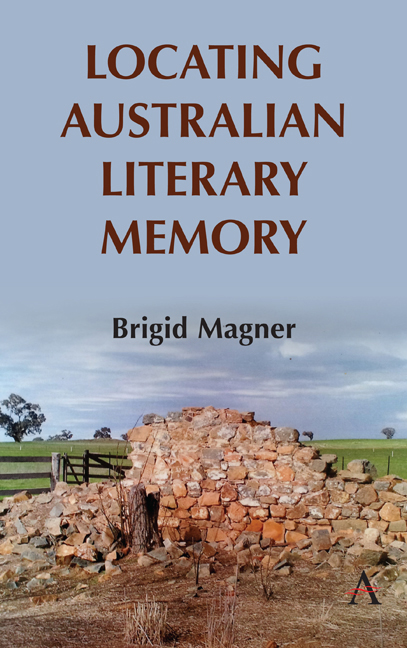Book contents
- Frontmatter
- Contents
- List of Illustrations
- Acknowledgements
- Introduction: Remembering Absent Authors
- Chapter One Adam Lindsay Gordon's Grave
- Chapter Two Joseph Furphy in the Riverina
- Chapter Three Henry Handel Richardson and the Haunting of Lake View
- Chapter Four Henry Lawson Country
- Chapter Five The Multiple Birthplaces of A. B. ‘Banjo’ Paterson
- Chapter Six Nan Chauncy's Sanctuary
- Chapter Seven Living Memorials: The Houses of Katharine Susannah Prichard and Eleanor Dark
- Chapter Eight Statue Mania: P. L. Travers and the Appeal of Mary Poppins
- Chapter Nine Kylie Tennant's Hut
- Chapter Ten The David Unaipon Monument at Raukkan
- Conclusion: Towards an Expanded Repertoire of Literary Commemorations
- Notes
- Index
Chapter Ten - The David Unaipon Monument at Raukkan
Published online by Cambridge University Press: 10 December 2019
- Frontmatter
- Contents
- List of Illustrations
- Acknowledgements
- Introduction: Remembering Absent Authors
- Chapter One Adam Lindsay Gordon's Grave
- Chapter Two Joseph Furphy in the Riverina
- Chapter Three Henry Handel Richardson and the Haunting of Lake View
- Chapter Four Henry Lawson Country
- Chapter Five The Multiple Birthplaces of A. B. ‘Banjo’ Paterson
- Chapter Six Nan Chauncy's Sanctuary
- Chapter Seven Living Memorials: The Houses of Katharine Susannah Prichard and Eleanor Dark
- Chapter Eight Statue Mania: P. L. Travers and the Appeal of Mary Poppins
- Chapter Nine Kylie Tennant's Hut
- Chapter Ten The David Unaipon Monument at Raukkan
- Conclusion: Towards an Expanded Repertoire of Literary Commemorations
- Notes
- Index
Summary
David Ngungaiponi (later Anglicized to Unaipon), a Ngarrindjeri man of the Coorong region of South Australia is commonly known as the ‘first’ published Aboriginal author. In fact, Unaipon might be more accurately described as the first Aboriginal author to write from within the contact zone between Indigenous and British colonial cultures. Now featured on the Australian 50- dollar note, Unaipon did not achieve widespread fame as an author in his lifetime but was better known as a scientist, inventor and public speaker. This chapter will consider his reputation as the author of Aboriginal myths and legends and the material ways in which his writing has been both appropriated and celebrated.
Unaipon was born in a bark wurly in 1872 on the banks of the Murray River at Tailem Bend. He spent much of his life at the Point McLeay Mission on the shores of Lake Alexandrina, where the freshwater meets the saltwater near the mouth of the Murray in South Australia's Lower Lakes. The site for the mission was originally chosen by Reverend George Taplin because it was a traditional camping ground called ‘Raukkan’. The mission was taken over from the Australian Friends Association (AFA) in 1916 by the South Australian State government which then assumed full control. It was known as Point McLeay Aboriginal Reserve and over the years it acquired some additional land but it was never sufficient for a good income. In 1974, the Raukkan lands were handed over to the Ngarrindjeri people and they changed the name to Raukkan Aboriginal Community in 1982.
Unaipon was the fourth of nine children born to Nymbulda and James Ngungaiponi. His father James was ‘the first Aboriginal convert’ and a lay preacher. Unaipon was educated at the mission school till the age of 13 and also learnt traditional stories and skills. After this time, he was largely self-taught but through the support of his first employer and the AFA he was able to extend his thinking into various fields including literature, science and even ancient Greek. He became a Renaissance man, an all-rounder who excelled in sciences and the arts and was dubbed ‘the Australian Da Vinci’ or ‘Black Leonardo’, along with less palatable titles such as ‘The Cleverest Aborigine’ and ‘Australia's Cleverest Darkie’.
- Type
- Chapter
- Information
- Locating Australian Literary Memory , pp. 189 - 212Publisher: Anthem PressPrint publication year: 2019



